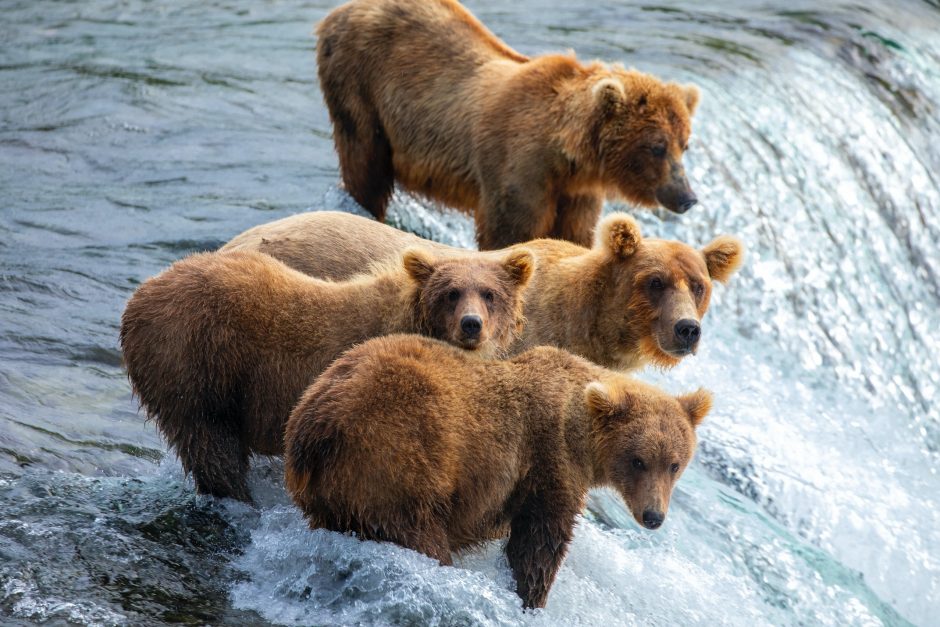
Shot Settings – Bears at Brooks Falls
This is the dream trip for just about every wildlife photographer on the planet–to have an extraordinary day (or days!) at the famous Brooks Falls platform in Katmai National Park, Alaska. If you are headed on an epic Alaska Photo Adventure that includes this sensational place, be sure to take a look here for some insight into potential camera settings for creating a shot like this!
Aperture – f/7.1
Nothing fancy here, but make note that I did not shoot “wide open” at f/5.6. Because these bears fill nearly half the frame, I wanted to make sure that the three bears in front were all in good focus. An f/5.6 could have done the job, potentially, but I played it safe with f/7.1. If I had a 2.8 lens would I have tried it? You betcha. But, I’m really happy with the depth of field here.
Shutter Speed – 1/400th of a second
Notice how “slow” this is! Honestly, in reviewing this I’m surprised that I got the shot at 1/400th of a second. Normally I would aim for something twice this fast. However, it just goes to show you that fractions of a second can be faster than you think. Look at how the water is nicely frozen with just a hint of movement. If I were to teleport back to this moment I would shoot it faster, but not to correct anything–I just am surprised I shot this at 1/400th and got away with a nice, crisp photo.
ISO 500
Here are the spoils of war. The benefit to going at a “slow” shutter speed is I was able to shoot at a rather low ISO. Shooting at ISO 500 is amazing in today’s world, providing super sharp and editable photos. Had I instead shot at 1/800th of a second, which is my intuition at this moment, I would have had to bump this up to ISO 1000. Not bad, but lower is better, so I’m glad I made this choice!
100-400mm lens @ 321mm
The key takeaway here is that I’m pretty darn close. This is on a full frame camera and I’m essentially filling the frame at 300mm. Very cool, right!? As a result, it’s worth considering a 70-200mm f/2.8, or perhaps a 300mm f/2.8 for these shots, to enhance the shallow depth of field (if appropriate) or shoot faster. Again, though, I wouldn’t change anything with this photo and I’m just giving you some options based on my review of this shot.
Other thoughts…
I shoot on manual + autoISO, so I did toy with exposure compensation here. I overexposed by 2/3s of a stop because there was quite a bit of white water, I knew that in order to make this bright like I saw it in real life, I’d need to overexpose. Otherwise, the camera would likely darken it to an unacceptable level. I also edited this shot to bring out some of the light and color in the bear’s fur, being careful not to over-brighten for sake of quality, but also intrigue of the shot.
Finally, I did enhance the black tones of the water to boost contrast and make the water come alive a tad more. You can also use the “dehaze” filter, which is like a smart-filter that changes a few things at once, oftentimes creating greater depth, definition, and intrigue in nature photos.
And there you have it! A quick rundown of camera settings for this epic shot at a truly remarkable place on our planet. If you haven’t been to Katmai National Park yet, it needs to be on your list, as it’s one of the most astounding nature photo opportunities the world over.
Get out there and give it a shot!

Court
Leave a reply